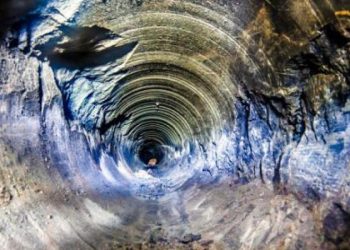In a groundbreaking discovery, scientists have identified more than 1,700 previously unknown viruses within ancient ice core samples taken from a Tibetan glacier, marking an unprecedented finding in a single location. During a meticulous analysis of ice cores from the Guliya Glacier, one of the largest ice caps in Tibet, researchers unearthed a remarkable array of viral remnants, most of which had never been observed before. This discovery was highlighted in a press release from Ohio State University, which emphasized the significance of these dormant viruses in understanding the historical relationship between climate change and viral evolution.
The ice cores, extracted from a depth of approximately 1,000 feet, offer what researchers describe as “pristine snapshots” of the Earth’s climate over the past 41,000 years. These findings reveal how the glacier, and the world at large, have responded to cycles of warming and cooling throughout millennia. “Before our study, the link between viruses and large-scale climate changes remained largely unexplored,” said ZhiPing Zhong, a research associate at Ohio State University and lead author of the study, which was published in the journal Nature Geoscience. Zhong noted the challenges of virus and microbe research, particularly due to the limited availability of glacial ice suitable for such studies.
While ancient viruses have been discovered in glacial samples before, the sheer number found in the Guliya Glacier—an estimated fiftyfold increase from previous findings—sets this discovery apart. According to a statement from Yale University, about 75% of the viral species identified in the Guliya core are entirely new to science, while the remaining quarter share genetic similarities with known organisms from other global regions. “This suggests that some of these viruses might have been transported from distant locations, such as the Middle East or even the Arctic,” Zhong explained. Among the viruses discovered, the most distinct “viral community” dates back roughly 11,500 years, a period that coincides with the Earth’s transition from the Last Glacial Stage to the warmer Holocene epoch we currently inhabit.
The study’s findings hint at a potential link between ancient viruses and climate shifts. Zhong and his colleagues propose that these newly discovered viral communities may have adapted to or been influenced by historical climate changes. While the researchers stress that these viruses pose no immediate threat to humans, they caution that other dormant viruses trapped in glaciers and ice structures could become hazardous as global warming continues to cause ice melt. This research not only expands our understanding of viral diversity but also underscores the broader implications of climate change on microbial life. As the world continues to warm, further study of these ancient viruses could reveal critical insights into how life adapts—or fails to adapt—to changing environmental conditions.











